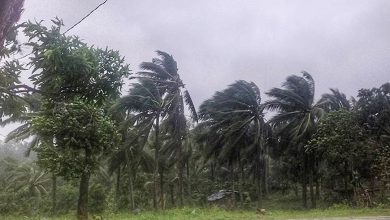Expanding and upgrading infrastructure through PIP 2023-2028

Cities, provinces, and metropolitan locations in the Philippines all face different problems that require different solutions. Coastal areas, farmlands, and mountain ranges all have unique challenges that make their local government units (LGU) and nongovernment organizations think twice about their public investments.
Whether in healthcare, agriculture, or education, these obstacles emphasize the need for reliable, efficient, and sturdy infrastructure. Concrete, steel, and cables are the building blocks that make the Philippines a functioning society enabling trade, connectivity, opportunities, and workforces.
This is why it comes as no surprise that infrastructure is constantly the top priority in each administration’s Public Investment Programs (PIP). The PIP serves as an instrument to tighten the planning of linkages; the basis for public sector resource allocation; and the basis for monitoring public investment performance.
These PIPs, usually implemented in the medium term or for the next six years, contain the priority programs and projects (PAP) to be implemented by each government office and LGU. It also includes the identification of the spatial coverage of PAPs, including the Philippine Development Plan (PDP) chapter and 16-point agenda being addressed and their objectively verifiable indicators while excluding recurrent costs on the general operation of the government, personnel services, re-lending, and other administrative capital expenditures.
Formulated by the National Economic and Development Authority (NEDA) along with national government agencies (NGAs), government-owned and -controlled corporations (GOCCs), other national government offices, and state universities and colleges (SUCs), the PIP for 2023-2028 has 5,329 priority PAPs with a total investment target of P20.22 trillion for the period.
Coherent to the PDP’s objective of job creation and poverty reduction, the theme “Expand and Upgrade Infrastructure” has the largest share in terms of investment, amounting to 85.75% of the total budget of P17.34 trillion with a total of 3,770 priority PAPs.
The PIP also placed importance on other themes such as “Modernize Agriculture and Agribusiness,” with investment targets for 391 priority PAPs amounting to P806.00 billion equivalent to 3.99% of the budget; and “Improve Education and Lifelong Learning,” with a total of 62 priority PAPs amounting to P701.05 billion or 3.47% of the budget.
Like the previous medium-term PIP (2017-2022), infrastructure, education, and agriculture continue to be prioritized by the government and have the largest shares in the medium-term investment targets.
“As the PDP 2023-2028 has identified infrastructure as critical to the economic transformation of the country, and consistent with the current administration’s recognition of infrastructure as the ‘backbone of an economy,’ infrastructure has the largest share of investments over the medium term for projects related to transportation, water resources, energy, information and communications technology, and social and other public infrastructure,” read the NEDA’s “Highlights of the Public Investment Program,” which could be accessed on the NEDA’s web site.
Consequently, the Department of Public Works and Highways (DPWH) and the Department of Transportation (DoTr) are the two government agencies with the most investment targets for PIP 2023-2028.
On the one hand, the DPWH is expected to implement 161 priority PAPs in the next six years with investment targets amounting to 58.56% of the total budget or P11.48 trillion. These projects include construction and rehabilitation of roads, expressways, and flood control facilities.
On the other hand, the DoTr’s portfolio of 197 priority PAPs includes developing and constructing ports, airports, and railways with medium-term investment targets amounting to P3,095.35 billion or 15.79% of the budget.
“As cited in the PDP 2023-2028, infrastructure facilities and services remain inadequate in terms of accessibility, quality, safety, and affordability. In line with the government’s thrust in prioritizing infrastructure, the DPWH and DoTr are the top two agencies in terms of total 2023-2028 investment targets,” the NEDA emphasized in the aforementioned document.
The Department of Education (DepEd) and the Department of Agriculture (DA) closely followed the two government agencies in budget allocation with P2.050 trillion for 17 PAPs and P1.6 trillion for 349 PAPs, respectively.
These public investments will be implemented all across the archipelago. Nearly 58% of the 5,329 projects are region-specific, more than 29% are interregional, and the remaining 13% are nationwide.
For region-specific PAPs, the National Capital Region, Region III (Central Luzon), and Region VI (Western Visayas) have the most investment targets for 2023-2028 with 1,365 collectively while Region VII (Central Visayas), Region IX (Zamboanga Peninsula), and the Bangsamoro Autonomous Region in Muslim Mindanao (BARMM) have the least with only 399 in total.
Region-specific PAPs by major island groups see Luzon having the highest investment targets amounting to P8.71 trillion or 74.31% of the budget. Almost 16% of the allocation or P1.83 trillion worth of investment targets for Visayas. Finally, Mindanao has medium-term investment targets amounting to P1,178.93 billion or 10.06% of the budget.
By Mode of Implementation, through the Republic Act No. 9184 or the Government Procurement Reform Act, nearly 96% or 5,112 priority programs and projects under the PIP 2023 to 2028 will be sourced through the national government budget in the coming years.
With former President Rodrigo R. Duterte’s “Build, Build, Build” and President Ferdinand R. Marcos, Jr.’s “Build Better More” projects, the Philippines is ushering in what is considered a “golden era of infrastructure.” Through the budget allocations seen in PIP 2023-2028, the government is showing the commitment it has placed to expanding and upgrading the facilities that lay the groundwork for economic prosperity — heralding a future where connectivity, accessibility, and opportunity are not just aspirations but realities for all citizens. — Jomarc Angelo M. Corpuz



